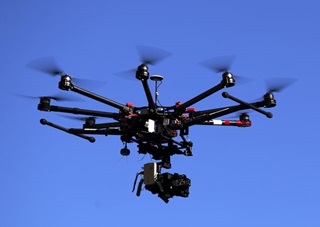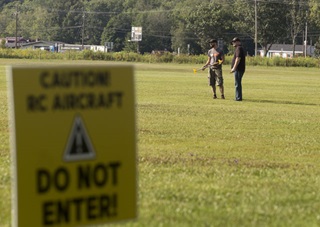
Unmanned aircraft may now resume flying between 15 and 30 nautical miles from the nation’s Capitol, the FAA announced Feb. 9.
The agency lifted a prohibition on flying remote-controlled model aircraft, including camera-toting, multirotor copters that have prompted consternation and litigation as they take to the skies in ever-growing numbers.
The FAA in September told operators of all kinds of model aircraft, including those flown by members of the Academy of Model Aeronautics who have a long history of safe flying, that the outer ring of the Washington, D.C., Special Flight Rules Area was off limits until further notice. That notice arrived Feb. 9, in the form of a notam and FAA press release, which states that, “As of 12:01 a.m. EST, Wednesday, February 10, the operating procedures will allow model aircraft, commercial and public users to operate in the outer ring of the Special Flight Rules Area (SFRA) under specific conditions.”
AMA Executive Director Dave Mathewson released a statement around the same time, celebrating the FAA decision:
“We are pleased that after weeks of working closely with the AMA and our local chartered clubs, the FAA today updated the conditions for flying unmanned aircraft in the Special Flight Rules Area (SFRA) surrounding the DC metropolitan area,” Mathewson said. “The permanent Notice to Airmen (NOTAM) published by the FAA allows our members to resume flight inside the DC SFRA. We want to thank Administrator Huerta and the FAA for working closely with us so that our 14 charted clubs in the area can now return to safe operations starting on February 10.”
The updated FAA policy applies to all model aircraft and “drone” operators, regardless of whether they are AMA members, and reiterates requirements applied to unmanned aircraft everywhere: complying with a 400-foot altitude limit, flying only during daytime VFR conditions, keeping the aircraft in sight at all times, and notifying airports in advance of any unmanned aircraft operations within five nautical miles of the airport. Unmanned aviation within the Washington, D.C., Flight Restricted Zone extending about 15 miles from Ronald Reagan Washington National Airport remains off-limits, as it was before the FAA expanded the no-drone zone last year.
The “drone” world includes a mixed bag of participants, ranging from experienced, certificated pilots authorized for commercial UAS operation to hobbyists with little or no training, or regard for other users of the airspace. That, said Jonathan Rupprecht, an attorney who is both directly and indirectly involved with litigation challenging some FAA requirements, restrictions, and prohibitions, said that professional versus nonprofessional operation is an important distinction the agency and others have failed to make.
“I believe they’re intentionally not clarifying certain areas that need to be clarified,” Rupprecht said in a Feb. 9 telephone interview. The FAA, in justifying the recently imposed registration requirement and citing numerous sightings of unmanned aircraft near airports and manned aircraft, is “presenting information in such a way to lead the public to conclude that unless these (unmanned) aircraft aren’t more heavily regulated, there’s going to be a catastrophe,” Rupprecht said.

Rupprecht said a closer look at those sighting reports reveals that only a tiny percentage suggest aircraft may have been at risk, and that regulators, lawmakers, and the public need to differentiate responsible from irresponsible unmanned aircraft operators, just as they do with manned aircraft.
“If we’re going to play the let’s-not-fly-aircraft-so-everybody-can-be-safe game, then everybody needs to not fly aircraft,” Rupprecht said.
There remain conflicts and inconsistencies within existing regulations, and their application to unmanned aircraft; there also remains pending litigation that challenges the FAA’s approach to UAS regulation so far. Some of that may be sorted out later in the year when the FAA finalizes proposed regulations that will govern commercial use of small, unmanned aircraft.
Jack Hardway, a member of the DC Area Drone User Group (which has drawn more than 2,600 members to date), an AOPA member, and an authorized commercial UAS operator who lives within the SFRA, said he welcomed the Feb. 9 announcement.
“I’m happy, and I appreciate the time and effort that the FAA put into it,” Hardway said, noting that the reversal required “a lot of inter-agency activity … they had to hash that out.”
Hardway remains concerned that professional operators who are trained pilots face more restrictions on UAS operations than untrained hobbyists, and that when flying one of his custom-built multirotor systems he faces more restrictions than he would flying a helicopter with a camera system, which he also has experience with.
Meanwhile, AMA, AOPA, the Association of Unmanned Vehicle Systems International, and other groups continue to work closely with the FAA to educate all airspace users about the rules, regulations, and safe operating procedures, with the Know Before You Fly campaign being central to that effort. Lockheed Martin added UAS notams to its online pilot briefing tool last year, giving (manned aircraft) pilots both graphic and text depictions of UAS operations, and the details of those operations including times and altitudes, along any given flight route. Authorized commercial UAS operators are required to file notams in advance of their operations.



